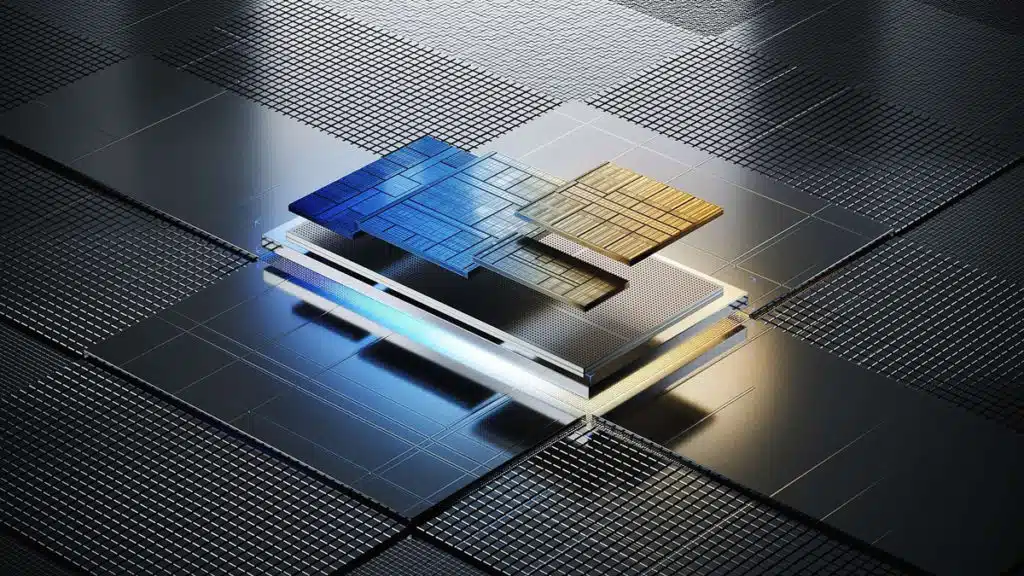Intel has announced that it is accelerating AI everywhere with the launch of powerful next-gen products, namely, the new Intel Core Ultra mobile processor family—the first chips built on the company’s Intel 4 process technology—and the 5th Gen Intel Xeon processor family, new sever/workstation CPUs that Intel says are “built with AI acceleration in every core.”
Here’s what Intel had to share about its new Intel Core Ultra mobile processors, which are code named Meteor Lake and designed to “usher in the age of the AI PC”:
Intel Core Ultra is the first processor built on the Intel 4 process technology and represents the company’s largest architectural shift in 40 years. It uses Foveros 3D advanced packaging technology, allowing advanced intellectual properties (IPs) to match leading-edge processes to optimize performance and capability. New Performance-core (P-core) architecture brings improved instructions per cycle (IPC). And new Efficient-cores (E-cores) and low-power Efficient-cores (LP E-cores) provide scalable, multi-threaded performance of up to 11% over the competition to deliver leadership CPU compute for ultrathin PCs.
Intel Core Ultra offers a built-in Intel Arc GPU that features up to eight Xe-cores, AI-based Xe Super Sampling (XeSS), DX12 Ultimate support, and up to double the graphics performance over the previous generation5 The GPU includes support for modern graphics features including hardware-accelerated ray tracing, mesh shading, AV1 encode and decode, HDMI 2.1 and DisplayPort 2.1 20G.
Intel’s newest NPU, branded Intel AI Boost, is purpose-built to handle longer-running AI workloads at low power, and it complements AI handled on both the CPU and GPU, enabling 2.5x better power efficiency than the previous generation.
- Up to 16 cores (six P-cores, eight E-cores, two LP E-cores), 22 threads and next-generation Intel Thread Director for optimal workload scheduling.
- Up to 5.1 gigahertz (GHz) maximum turbo frequency.
- Up to 64 gigabytes (GB) LP5/x and up to 96 GB DDR5 maximum memory capacity.
- Leading wireless features including integrated Intel Wi-Fi 6E (Gig+) and support for discrete Intel Wi-Fi 77 (5 Gig) for multi-gigabit speeds in more locations, wired-like responsiveness and extreme reliability.
- Intel Killer software for intelligent connection optimization and network traffic prioritization for gamer and creator applications.
- Intel Bluetooth LE Audio to enable low-power, immersive, high-fidelity PC sonic experiences and support for new Bluetooth Auracast capabilities for broadcast audio tuning, personal audio sharing, and enhanced accessibility for hearing aids and new assisted listening services.
- Blazing connection speeds of 40 gigabits per second (Gbps) with Thunderbolt 4 providing PC connectivity to multiple 4K monitors, fast storage and other accessories.
- OpenVINO toolkits support with minimal code changes and automatic device detection enhances AI performance by routing workloads to the right compute engine and streamlined workflow with ONNX and ONNX Runtime for faster inferencing.
“The launch of Intel Core Ultra represents the unmatched scale and speed at which Intel is enabling AI on the PC. By 2028, AI PCs will comprise 80% of the PC market and together with our vast ecosystem of hardware and software partners, Intel is best positioned to deliver this next generation of computing,” said Michelle Johnston Holthaus, Intel executive vice president and general manager of Client Computing Group.
The age of the AI PC is here with the new #IntelCoreUltra processor. The most efficient x86 processor for ultrathin systems that seamlessly brings the power of #AI to work and play. Visit https://t.co/QrVGu6ojkb 💻🎮 pic.twitter.com/sJmJwmrtuT
— Intel (@intel) December 14, 2023
And here’s what Intel had to share about its new 5th Gen Intel Xeon Processors, which the company says deliver “leaps in performance, increased security and exceptional efficiency across key workloads, and a lower total cost of ownership”:
5th Gen Xeon processors support up to 64 cores per CPU and nearly 3x the maximum last-level cache from the previous generation. They offer eight channels of DDR5 per CPU, support DDR5 at up to 5,600 megatransfers per second (MT/s), and increase inter-socket bandwidth with Intel UPI 2.0, offering up to 20 gigatransfers per second (GT/s). Select 5th Gen Xeon processor-based instances will support CXL Type 3 workflows through leading cloud service providers (CSPs).
With AI acceleration in every core, 5th Gen Xeon processors address demanding end-to-end AI workloads before customers need to add discrete accelerators — including up to 42% higher inference performance and less than 100 millisecond latency on large language models (LLMs) under 20 billion parameters.
Compared with the previous generation of Xeon, these processors deliver 21% average performance gain for general compute performance and enable 36% higher average performance per watt across a range of customer workloads. Customers following a typical five-year refresh cycle and upgrading from even older generations can reduce their TCO by up to 77%.
“Designed for AI, our 5th Gen Intel Xeon processors provide greater performance to customers deploying AI capabilities across cloud, network and edge use cases. As a result of our long-standing work with customers, partners and the developer ecosystem, we’re launching 5th Gen Intel Xeon on a proven foundation that will enable rapid adoption and scale at lower TCO,” said Sandra Rivera, Intel executive vice president and general manager of Data Center and AI Group.
Today @PGelsinger introduced 5th Gen #IntelXeon processors—the best CPU for #AI workloads. They deliver top CPU performance on image classification, natural language processing, and more. Visit https://t.co/ccGFlz6CmN pic.twitter.com/LhPFp9r6tU
— Intel (@intel) December 14, 2023
Intel Core Ultra mobile processors are available on-shelf and online starting today, while future Intel Xeon processors, including Sierra Forest, with E-core efficiency and up to 288 cores (ETA: first half of 2024) and Granite Rapids, with P-core performance, are coming soon, Intel said.

